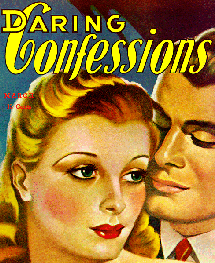




















|
|

Before World War II, Canadians read comic books and pulp magazines which were imported from the United States. The War Exchange Conservation Act of December 1940 restricted the importation of non-essential commodities from the United States, including comic books. This gave Canadian publishers a captive market, and the first regular format Canadian comic book, Better Comics (No. 1), was published in March 1941 in Vancouver by Maple Leaf Publishing. After the war, Canadian comics again had to compete with foreign publications. Beginning in 1948, there was a growing concern from parents and the general public that crime comic books and crime pulp magazines were a contributing factor in leading young people into criminal activities. Crimes by children who were avid readers of comic books fuelled the campaign to have them banned. Bill 10, which became known as the Fulton Bill after MP Davie Fulton, became law on December 10, 1949. It made it an offence to make, print, publish, distribute, sell, or own "any magazine, periodical or book which exclusively or substantially comprises matter depicting pictorially the commission of crimes, real or fictitious." Non-crime comic books survived and have enjoyed fluctuating popularity both in French and English Canada.

This war series specialized in showing military heroics by Canadian soldiers.
|

|
Commando Comics. [from circa 1942 to 1946].
Toronto: Bell Features. No. 7, [circa 1942-1943].
|

Printed in Canada but published by the Paris branch of Fides from 1944 to 1965, Hérauts first used text which was translated from the American. Later, most of the content was Canadian, and it even used Canadian artists. The material was mainly religious and historical in nature, and designed to edify rather than amuse. It was distributed through the school system to thousands of students for over 20 years. By the mid 1960s, it could not compete with publications from France such as Tintin and Spirou.
Hérauts. Le Trésor de la jeunesse. (1944-1965).
Paris: Fides. 3e année, numéro 17. 20 mai 1952.

This issue was the first Canadian colour comic book. Fifty thousand copies were printed.
Wow Comics. (1941-1946).
Toronto: Commercial Signs of Canada, and later Bell Features. Issue no. 1 (September 1941).

The longest running Canadian comic book.
Cerebus the Aardvark. (December 1977 to the present).
Kitchener, Ont.: Aardvark-Vanaheim. Vol. 1, no. 33 (December, 1981).

The most popular humour magazine, which includes some comic strips, in French Canada with an astonishing 75 000 copies printed.
Croc. (October 1977 to the present).
Montréal: Ludcom Inc. N°. 72 (July, 1985).

Example of an early Canadian pulp magazine.
|

|
Daring Confessions. (1942-1948?).
Toronto: Daring Publishing Co. Vol. 1, no. 1. March 1942.
|

|
